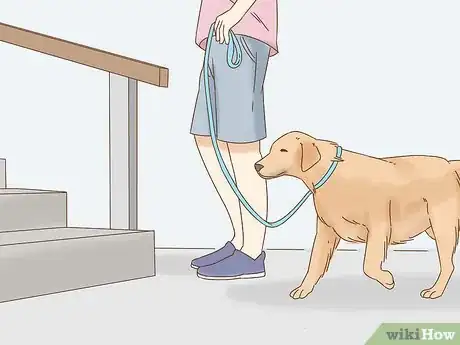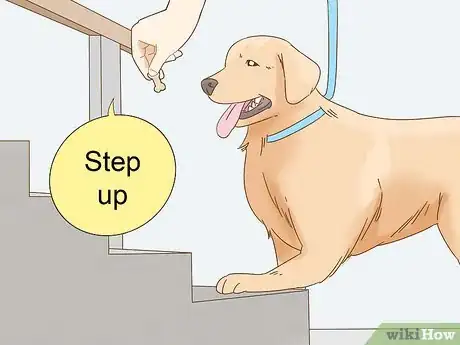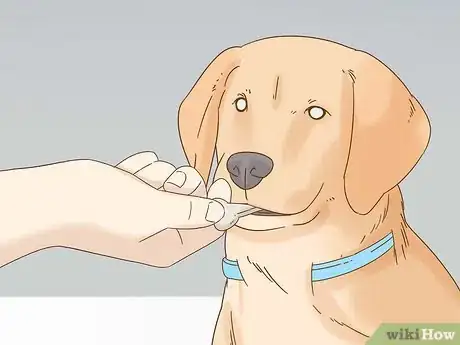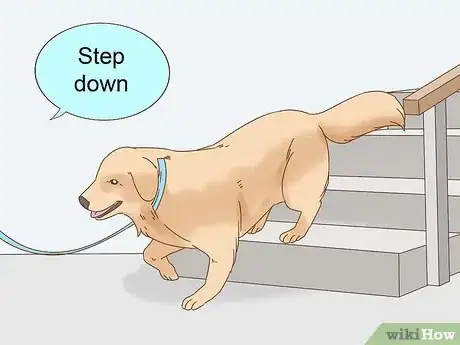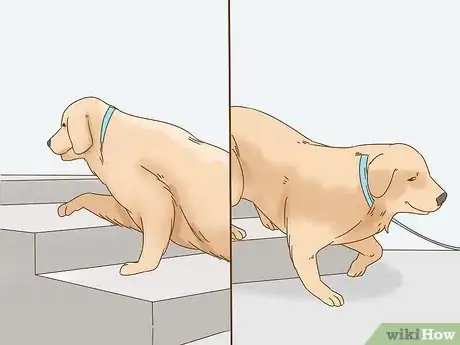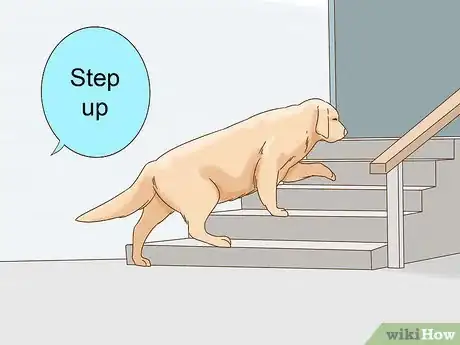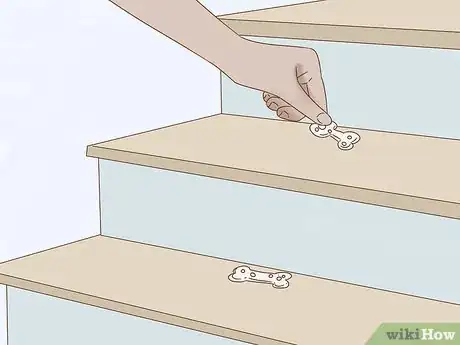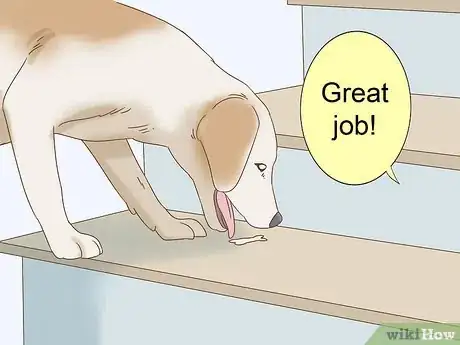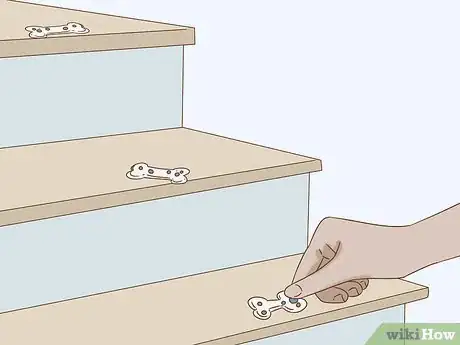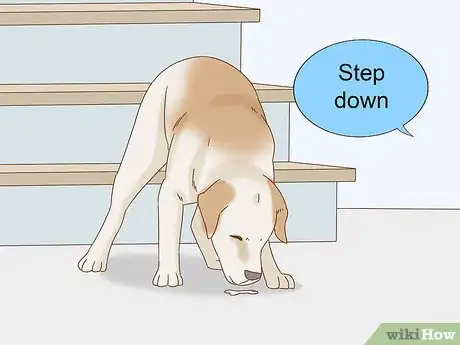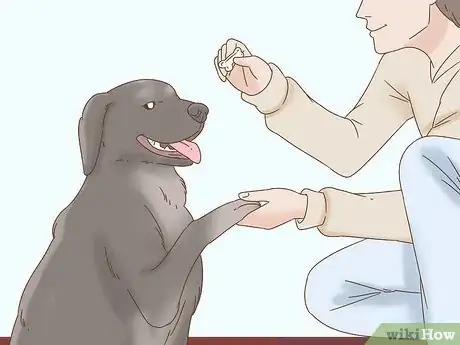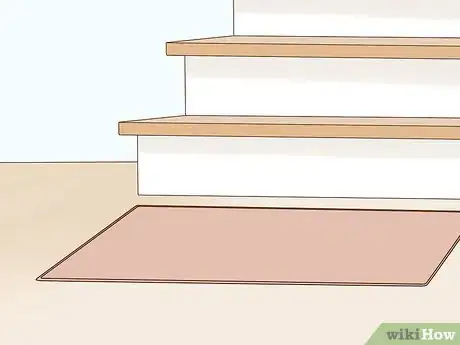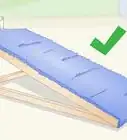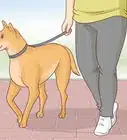This article was co-authored by Beverly Ulbrich and by wikiHow staff writer, Christopher M. Osborne, PhD. Beverly Ulbrich is a Dog Behaviorist and Trainer and the Founder of The Pooch Coach, a private dog training business based in the San Francisco Bay Area. She is a Certified CGC (Canine Good Citizen) Evaluator by the American Kennel Club and has served on the Board of Directors for the American Humane Association and Rocket Dog Rescue. She has been voted the best private dog trainer in the San Francisco Bay Area 4 times by SF Chronicle and by Bay Woof, and she has won 4 "Top Dog Blog" awards. She has also been featured on TV as a dog behavior expert. Beverly has over 18 years of dog behavior training experience and specializes in dog aggression and anxiety training. She has a Master of Business Administration from Santa Clara University and a BS from Rutgers University.
There are 8 references cited in this article, which can be found at the bottom of the page.
This article has been viewed 20,220 times.
Learning that your dog has gone blind can take an emotional toll, but don’t think for a moment that you can’t still enjoy years of happiness together. In many ways, training a blind dog to do things like navigate the stairs isn’t all that different from training a sighted dog—it requires patience, praise, and lots of treats! Try using a leash, treats, and verbal commands to lead your dog up and down the stairs, then use treats and praise to guide it up and down the stairs without a leash.
Steps
Leading the Dog Step-by-Step
-
1Lead your dog on a leash to the bottom of the steps. Hook your dog up to its normal leash, stand to its side, and lead it to the base of the staircase. When you are just short of the first step, stop the dog and say “stop” or “halt” if you have mastered that command.[1]
- Stair training is easier if your dog is already comfortable with verbal commands like “stop” or “halt.” Verbal commands are critical for training any dog, and especially blind dogs.
- Leading a blind dog may be easier with a harness-style (instead of collar-style) leash, which gives you a greater ability to guide its movements.
-
2Say “step up” and hold a treat above the first step. Lean forward and hold the treat out so that it is above the first step and out of the dog’s reach. Calmly but clearly say “step up” to identify the move that needs to be made in order to reach the treat.[2]
- Hold the treat out so that the dog can’t reach it without placing its front paws on the first step.
- Don’t worry about the dog not being able to see the treat—it’ll definitely smell it!
Advertisement -
3Give the treat and verbal praise when the dog touches the stair tread. As soon as both front paws are on the first stair tread, allow your dog to have the treat. Immediately offer enthusiastic praise (like “good boy!” or “that’s my girl!”) and pet it in a way it likes.[3]
- Pieces of kibble make good training treats for many dogs, and are more nutritious than most mass-marketed dog treats. If you do use treats, ask your vet for recommendations for ones with good nutritional value.
-
4Lead your dog up onto the first step, then reward it again. Use another treat to draw your dog completely up onto the first step. As soon as all 4 paws are on the step, give the reward and offer praise.[4]
- A large dog may not be able to fit all 4 paws on a single step. In this case, provide the treat and praise when its front paws move up to the second step and its rear paws are on the first step.
-
5Lead the dog off the first step using a “step down” command. Use the leash to help turn the dog around, then use a “step down” command and hold out a treat so that the dog must descend the step to reach it. Give the treat and praise when its front paws touch the floor, then repeat the process to get its back paws off the steps.[5]
- Going down the stairs is usually more stressful for a blind dog, since it’s stepping off into empty air and must completely trust you. Be very patient and enthusiastic.
-
6Continue the process up and down the stairs, at the dog’s pace. After going up and down a single step, try going up and down 2 steps. Then, if your dog is still eager and engaged, try 3 steps. Don’t be surprised if you have to break up the process over several days or even a few weeks, however.[6]
- If your dog becomes anxious or resistant to follow your lead or take the treat, stop training for the day and try again the next day. See if you can add 1-2 steps to your up-and-down climb each day.
-
7Use just verbal commands and praise once it’s mastered the stairs. After the dog has successfully climbed up and down all the stairs on the staircase with the assistance of treats, try training it without the treats the next day. Follow the same process, but skip the treats and rely on your “step up” and “step down” commands and lots of praise to lead the dog.[7]
- As it becomes more familiar and confident with the staircase, you can try using “step up” when you reach the base of the steps, then praise it after it’s ascended the entire staircase. Likewise, do the same with “step down” to descend the stairs.
- Depending on your dog, you may need to start training from scratch with each new staircase, or you may be able to skip forward if it’s confident in your lead.
Luring the Dog with Treats on Each Step
-
1Place a treat on the back of each stair tread. With your dog out of the area, place a single treat near the back center of each stair tread going up the staircase. Using this method, the treats will lure the dog up the steps one-by-one, rather than you leading it up the steps with a leash and treats.[8]
- Make sure there are no other dogs around to steal the treats!
- Use pieces of kibble as treats or, if your dog likes cheese, tear string cheese into small pieces.
-
2Walk ahead of your dog and say “step up” at the first step. Without putting the leash on the dog, stand at the base of the steps and use “come” or a similar command to draw the dog to you. Walk up the first step and say “come” if needed to bring your dog forward. Then, when it reaches the base of the first step, say “step up.”[9]
- While you won’t be using a leash right away, you may need one if the dog gets anxious part of the way up the steps. Keep a leash rolled up in your hand or pocket.
- This leash-free training method can help a blind dog master a staircase faster, but it works best with dogs that are confident and comfortable following your lead. If you dog is anxious, training with a leash may work better.
-
3Offer verbal praise when it reaches the first treat. As soon as the dog ascends the first step and gobbles up the treat, offer enthusiastic praise like “Great job!” or “Way to go!” You might also pet it on the back if it enjoys that.[10]
- Don’t shout your praise so that you startle the dog, but make sure you express some enthusiasm. You want it to know you appreciate its good work!
-
4Repeat the process up the entire staircase. Some dogs may move from step to step (and treat to treat) without prompting from you. In this case, keep walking up the stairs ahead of it and offering praise as it goes. If your dog needs encouragement to go up each step, repeat the initial process: say “step up” as you ascend the next step, then praise it as soon as it follows you.[11]
- If the dog isn’t interested in continuing, stop the session there and try again the following day. Consider it progress if it adds 1-2 steps per day.
- To end the session, attach the leash and lead the dog down the steps. Say “step down,” hold out a treat so it must descend a step to reach it, and offer the treat and praise each time it goes down a step.
-
5Place treats on the fronts of the treads to go downstairs. Once your dog can readily ascend the staircase, use treats to help lure it down the steps. Place the treats near the front ledge (but not right on the edge) of each step, so that the dog will have to step down to reach them.[12]
- Expect training to go more slowly for downstairs than upstairs. Your dog is literally putting blind trust in you!
-
6Use “step down” and praise to guide the dog downward. Follow the same procedure to lure your dog down the steps: walking ahead, giving a command, and providing verbal praise for each success. It may take a day, several days, or even a few weeks, but your dog will make it![13]
- Use the leash, commands, treats, and praise to lead your dog down the steps if it loses interest in leash-free training or become too anxious to continue. Try again the next day.
- Practice going up and then down a single staircase at a time. When your dog masters one staircase, move on to another.
Making Training Easier
-
1Train at your dog’s pace, especially if it’s newly blind. Because their other senses—especially hearing and smelling—are so exceptional, dogs often compensate for blindness quite well. You may not even realize your dog has gone blind for a while! However, if its blindness has occurred very recently, and especially if it happened suddenly, plan for a more drawn-out training process.[14]
- In addition to the physical adjustments that it has to make, dogs can experience a great deal of anxiety as they lose their sight. Be patient and compassionate as both of you adjust to this new reality.
-
2Keep your home’s layout consistent. In some cases, people don’t realize their dog can no longer see until they rearrange their furniture. By keeping things in their usual places, you make everything comfortably familiar for your dog. It can also use its other senses to navigate around familiar landmarks more easily.[15]
- If you must make some changes—for instance, moving the dog’s bedding and food dish to the first floor since it can’t yet handle the stairs—do the minimum amount necessary.
-
3Use tactile cues (like rugs) to identify staircases. To help your dog recognize when it’s approaching a staircase, place rugs with specific textures at the top and bottom of the stairs. You may even want to place one type of rug (for instance, a soft, high-pile rug) at the top of every staircase in your home, and another type (like a firm, low-pile rug) at the bottom of every staircase.[16]
- This can reduce any fear your dog might have of stepping off the edge of a staircase without realizing it.
- Make sure the rugs have anti-skid backings so they don’t slide out from under your dog’s feet.
-
4Provide scent cues to mark the tops and bottoms of staircases. Blind dogs usually come to rely even more on their exceptional sense of smell, and you can take advantage of this to help them identify staircases. Add a small amount of a mild fragrance to the baseboard or stair treads at the top and bottom of the steps.[17]
- However, some essential oils, including cinnamon, citrus, pennyroyal, peppermint, pine, sweet birch, tea tree (melaleuca), wintergreen, and ylang ylang, can be toxic to a dog if it ingests it or gets it on its skin. Talk to your vet about which essential oils may be used around your dog.[18]
- You might use one scent for the tops of all your staircases, and another scent for the bottoms.
- This is also a good way to help blind dogs identify doorways, furniture, and so on.
-
5Don’t underestimate your blind dog! While it can be devastating to find out that your beloved dog is losing its sight, don’t fall into the trap of assuming that it can no longer lead a happy life. Dogs are resilient, adaptable, and naturally less reliant on their sense of sight than humans are.[19]
- With a bit of training and some minor adjustments to your routines, you can live many more happy years with your canine pal!
Community Q&A
-
QuestionHow do I stop my blind dog from bumping into things?
 Beverly UlbrichBeverly Ulbrich is a Dog Behaviorist and Trainer and the Founder of The Pooch Coach, a private dog training business based in the San Francisco Bay Area. She is a Certified CGC (Canine Good Citizen) Evaluator by the American Kennel Club and has served on the Board of Directors for the American Humane Association and Rocket Dog Rescue. She has been voted the best private dog trainer in the San Francisco Bay Area 4 times by SF Chronicle and by Bay Woof, and she has won 4 "Top Dog Blog" awards. She has also been featured on TV as a dog behavior expert. Beverly has over 18 years of dog behavior training experience and specializes in dog aggression and anxiety training. She has a Master of Business Administration from Santa Clara University and a BS from Rutgers University.
Beverly UlbrichBeverly Ulbrich is a Dog Behaviorist and Trainer and the Founder of The Pooch Coach, a private dog training business based in the San Francisco Bay Area. She is a Certified CGC (Canine Good Citizen) Evaluator by the American Kennel Club and has served on the Board of Directors for the American Humane Association and Rocket Dog Rescue. She has been voted the best private dog trainer in the San Francisco Bay Area 4 times by SF Chronicle and by Bay Woof, and she has won 4 "Top Dog Blog" awards. She has also been featured on TV as a dog behavior expert. Beverly has over 18 years of dog behavior training experience and specializes in dog aggression and anxiety training. She has a Master of Business Administration from Santa Clara University and a BS from Rutgers University.
Dog Behaviorist & Trainer Training your dog to stop when you say "no" and continue forward when you say "yes" can be a really useful way to help them navigate.
Training your dog to stop when you say "no" and continue forward when you say "yes" can be a really useful way to help them navigate. -
QuestionWe have open stairs on a patio. She falls off the side. What can we do to teach her to go straight forward?
 Community AnswerGuide her by holding her collar and helping her walk forward. Placing treats on the steps would help if they are very strong smelling treats.
Community AnswerGuide her by holding her collar and helping her walk forward. Placing treats on the steps would help if they are very strong smelling treats. -
QuestionAny ideas for going down the stairs? He is a 12 year old standard poodle who just lost his sight and won't try the steps. He also cannot smell so he does not know a treat is there.
 Community AnswerTry putting some sort of carpeting down, this will give your pup more grip and stability. It might also help if you practiced walking down beside him to help him feel more comfortable.
Community AnswerTry putting some sort of carpeting down, this will give your pup more grip and stability. It might also help if you practiced walking down beside him to help him feel more comfortable.
Things You’ll Need
- Treats
- Leash
- Textured rugs (optional)
- Mild fragrances (optional)
References
- ↑ https://www.reachoutrescue.org/info/display?PageID=11145
- ↑ https://www.blinddogrescue.org/dog-blindness/tips-for-owners/
- ↑ https://www.reachoutrescue.org/info/display?PageID=11145
- ↑ https://www.reachoutrescue.org/info/display?PageID=11145
- ↑ https://www.whole-dog-journal.com/issues/7_4/features/Blind-Dogs_5622-1.html
- ↑ https://www.reachoutrescue.org/info/display?PageID=11145
- ↑ https://www.blinddogrescue.org/dog-blindness/tips-for-owners/
- ↑ https://wagwalking.com/training/walk-down-stairs
- ↑ https://www.akc.org/expert-advice/health/how-to-help-a-blind-dog/
- ↑ https://www.whole-dog-journal.com/issues/7_4/features/Blind-Dogs_5622-1.html
- ↑ https://wagwalking.com/training/walk-down-stairs
- ↑ https://wagwalking.com/training/walk-down-stairs
- ↑ https://www.akc.org/expert-advice/health/how-to-help-a-blind-dog/
- ↑ https://www.akc.org/expert-advice/health/how-to-help-a-blind-dog/
- ↑ https://bestfriends.org/resources/blind-dog-and-cat-faqs
- ↑ https://www.akc.org/expert-advice/health/how-to-help-a-blind-dog/
- ↑ https://animals.mom.me/how-to-live-with-a-blind-dog-12109341.html
- ↑ https://www.akc.org/expert-advice/health/are-essential-oils-safe-for-dogs/
- ↑ https://bestfriends.org/resources/blind-dog-and-cat-faqs
